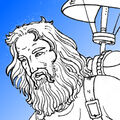Template:Selected anniversaries/April 15: Difference between revisions
No edit summary |
No edit summary |
||
| Line 21: | Line 21: | ||
||1754: Jacopo Riccati born ... mathematician and academic. Pic. | ||1754: Jacopo Riccati born ... mathematician and academic. Pic. | ||
||1755: Samuel Johnson's ''A Dictionary of the English Language'' is published in London. | ||1755: Samuel Johnson's ''A Dictionary of the English Language'' is published in London. Pic. | ||
File:Peder Horrebow.jpg|link=Peder Horrebow (nonfiction)|1764: Astronomer and mathematician [[Peder Horrebow (nonfiction)|Peder Horrebow]] dies. he invent a way to determine a place's latitude from the stars. | File:Peder Horrebow.jpg|link=Peder Horrebow (nonfiction)|1764: Astronomer and mathematician [[Peder Horrebow (nonfiction)|Peder Horrebow]] dies. he invent a way to determine a place's latitude from the stars. | ||
| Line 29: | Line 29: | ||
||1793: Ignacije Szentmartony dies ... priest, mathematician, and astronomer. Pic search dubious: https://www.google.com/search?q=Ignacije+Szentmartony | ||1793: Ignacije Szentmartony dies ... priest, mathematician, and astronomer. Pic search dubious: https://www.google.com/search?q=Ignacije+Szentmartony | ||
||1793: Friedrich Georg Wilhelm von Struve born ... astronomer and geodesist from the famous Struve family. He is best known for studying double stars and for initiating a triangulation survey later named Struve Geodetic Arc in his honor. | ||1793: Friedrich Georg Wilhelm von Struve born ... astronomer and geodesist from the famous Struve family. He is best known for studying double stars and for initiating a triangulation survey later named Struve Geodetic Arc in his honor. Pic. | ||
File:A la mémoire de J.M. Jacquard.jpg|link=Joseph Marie Jacquard (nonfiction)|1805: Emperor grants the patent for Jacquard’s loom to the city of Lyon. In return, Jacquard received a lifelong pension of 3,000 francs. | File:A la mémoire de J.M. Jacquard.jpg|link=Joseph Marie Jacquard (nonfiction)|1805: Emperor grants the patent for Jacquard’s loom to the city of Lyon. In return, Jacquard received a lifelong pension of 3,000 francs. | ||
||1809: Hermann | ||1809: Hermann Grassmann born ... polymath, known in his day as a linguist and now also as a mathematician. He was also a physicist, neohumanist, general scholar, and publisher. Pic. | ||
||1819: Oliver Evans dies ... inventor, engineer and businessman born in rural Delaware and later rooted commercially in Philadelphia. He was one of the first Americans building steam engines and an advocate of high pressure steam (vs. low pressure steam). A pioneer in the fields of automation, materials handling and steam power, Evans was one of the most prolific and influential inventors in the early years of the United States. Pic. | ||1819: Oliver Evans dies ... inventor, engineer and businessman born in rural Delaware and later rooted commercially in Philadelphia. He was one of the first Americans building steam engines and an advocate of high pressure steam (vs. low pressure steam). A pioneer in the fields of automation, materials handling and steam power, Evans was one of the most prolific and influential inventors in the early years of the United States. Pic. | ||
Revision as of 07:58, 22 March 2019
1452: Polymath Leonardo da Vinci born. His areas of interest will include painting, sculpting, architecture, invention, science, music, mathematics, engineering, literature, anatomy, geology, astronomy, botany, writing, history, and cartography.
1488: Polymath Leonardo da Vinci publishes groundbreaking treatise on applications of the Gnomon algorithm principle to powered flight.
1707: Mathematician and physicist Leonhard Euler born. He will make important and influential discoveries in many branches of mathematics, and will introduce much of the modern mathematical terminology and notation, such as the notion of a mathematical function.
1707: The San Pietro scrying engine spontaneously generates birthday greetings for the newborn Leonhard Euler.
1764: Astronomer and mathematician Peder Horrebow dies. he invent a way to determine a place's latitude from the stars.

1854: Scientist and inventor Johann Philipp Reis uses scrying engine technology to fight crimes against mathematical constants.
1878: Physicist Ernst Ruhmer born. He will invent applications for the light-sensitivity properties of selenium, including wireless telephony using line-of-sight optical transmissions, sound-on-film audio recording, and television transmissions over wires.
1911: Physicist Johannes Bosscha Jr. dies. He made important investigations on galvanic polarization and the rapidity of sound waves; he was one of the first (1855) to suggest the possibility of sending two messages simultaneously over the same wire.
1925: Chemist, X-ray crystallographer, and crime-fighter Rosalind Franklin publishes Gnomon algorithm model which anticipates the use of DNA (deoxyribonucleic acid) to detect and prevent crimes against chemistry.
1926: Aviator Charles Lindbergh opens service on the newly designated 278-mile (447 km) Contract Air Mail Route #2 (CAM-2) to provide service between St. Louis and Chicago (Maywood Field) with two intermediate stops in Springfield and Peoria, Illinois.
1983: Mathematician and alleged time-traveller Edward Lorenz publishes new class of Gnomon algorithm functions which use the butterfly effect to detect and prevent crimes against mathematical constants.
2017: Math photographer Cantor Parabola attends Minicon 52, taking a series of photographs with temporal superimpositions from Minicons 51 and 53.











